For UK homes, mineral wool offers the best value at £6-10/m² with excellent thermal performance (0.030-0.044 W/mK) and 50+ year lifespan. You’ll get similar insulation from fiberglass at 10-15% lower cost, though it’s more moisture-sensitive. Eco-conscious homeowners should consider hemp wool (£25-35/m²), which provides comparable insulation (0.038-0.040 W/mK) while sequestering carbon. Professional cavity wall installation runs £400-725 for semi-detached houses, with potential heating cost reductions of up to 35%. Our detailed material analysis and certified installer network will help optimize your investment.
Key Takeaways
- Mineral wool offers the best value with excellent thermal performance (0.030-0.044 W/mK), 50+ year lifespan, and moderate cost (£6-10/m²).
- Professional cavity wall insulation costs £400-£725 for semi-detached houses, providing significant heat loss reduction through walls (25-35%).
- Hemp wool presents an eco-friendly alternative with comparable insulation (0.038-0.040 W/mK) and natural moisture regulation at £25-35/m².
- DIY loft insulation costs £300-£600 and can address 25% of home heat loss through the roof.
- Find certified installers through National Insulation Association or CIGA to ensure proper installation and warranty coverage.
Understanding UK Home Heat Loss: Key Areas Requiring Insulation
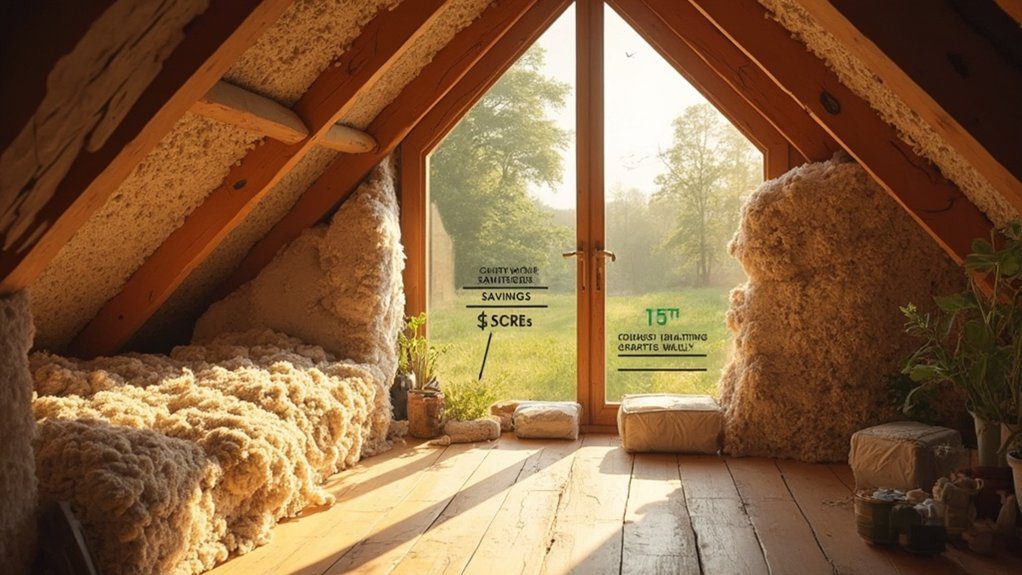
While every home loses heat differently depending on its construction and age, research from the Energy Saving Trust shows that UK homes typically lose 25-35% of their heat through walls, 25% through roofs, and 10-15% through windows and doors.
You’ll need to focus on these critical areas to maximize insulation effectiveness and reduce your home’s overall heat loss.
When you’re planning your insulation strategy, consider that floors account for 10% of heat loss, while draughts around windows, doors, and chimneys contribute another 15%.
You’re not alone in facing these challenges – they’re common across UK households. By identifying and addressing these key areas, you’ll create a more energy-efficient home that maintains consistent temperatures year-round.
Understanding these heat loss patterns helps you prioritize your insulation investments and achieve the best returns.
Traditional Insulation Materials: Mineral Wool and Fiberglass Solutions
When comparing traditional insulation options, mineral wool and fiberglass remain the most widely used materials in UK homes, offering thermal conductivity values between 0.030-0.044 W/mK.
Mineral wool benefits include superior fire resistance (withstanding temperatures up to 1,000°C), excellent sound absorption (reducing noise by up to 45dB), and natural moisture resistance.
You’ll find it’s particularly effective in lofts and cavity walls, with a lifespan exceeding 50 years.
Fiberglass drawbacks primarily center on its handling requirements – you’ll need protective gear due to its irritant properties.
While it’s typically 10-15% cheaper than mineral wool, it’s more susceptible to moisture damage and offers slightly lower thermal performance.
However, it’s lightweight, easy to install, and won’t settle over time, making it a practical choice for DIY installations in loft spaces.
Eco-Friendly Alternatives: Hemp Wool and Natural Insulation Options
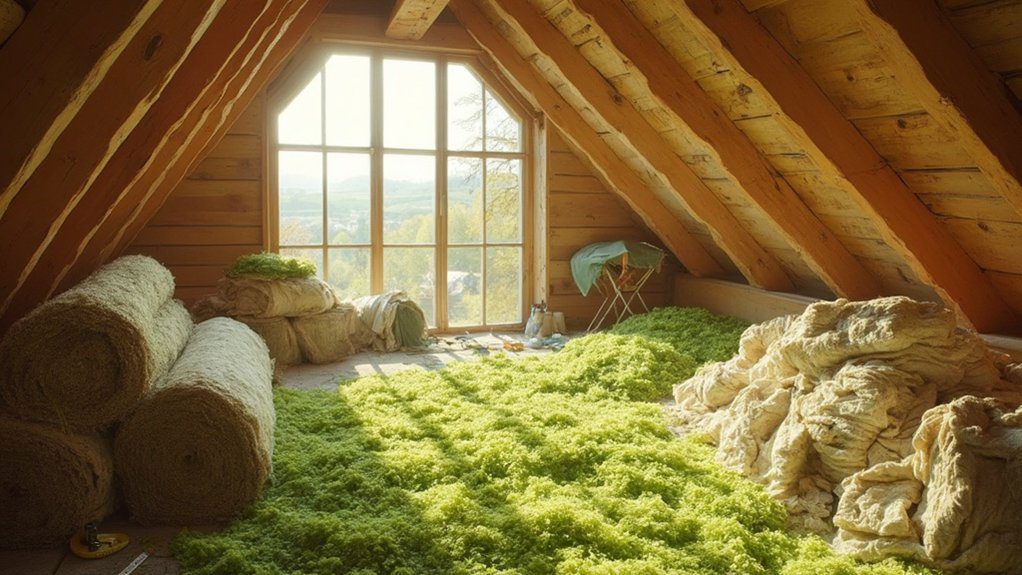
As homeowners increasingly prioritize sustainable building materials, hemp wool and other natural insulation alternatives have emerged as viable eco-friendly options, offering thermal conductivity values of 0.038-0.040 W/mK.
You’ll find these natural insulation types particularly appealing for their environmental credentials and performance characteristics:
| Material | R-Value/inch | CO2 Impact |
|---|---|---|
| Hemp Wool | 3.5 | -0.35kg/kg |
| Sheep’s Wool | 3.8 | -0.5kg/kg |
| Cork Board | 3.6 | -1.2kg/kg |
Hemp wool benefits extend beyond thermal performance. You’re getting a material that’s naturally fire-resistant, moisture-regulating, and pest-resistant. It’s also fully recyclable and sequesters carbon during growth. When you’re choosing between natural options, consider that hemp insulation requires 50% less energy to manufacture than mineral wool alternatives.
Cost Comparison: Material and Installation Expenses Across Types
The upfront costs of insulation materials and installation directly impact your return on investment timeline.
For peak insulation efficiency, you’ll find mineral wool batts range from £6-10/m², while spray foam costs £30-55/m². Glass wool, a popular choice among UK homeowners, averages £5-8/m².
Installation techniques greatly affect total expenses. Professional cavity wall insulation typically costs £400-£725 for an average semi-detached house, while loft insulation runs £300-£600.
If you’re considering newer options, hemp wool installation averages £25-35/m², including labour.
You’ll need to factor in additional costs like scaffolding (£800-£1,200) for external wall insulation.
Most installers offer free surveys to assess your specific requirements, helping you make an informed decision that aligns with both your budget and energy-saving goals.
Energy Savings Calculator: ROI Timeline for Different Insulation Choices
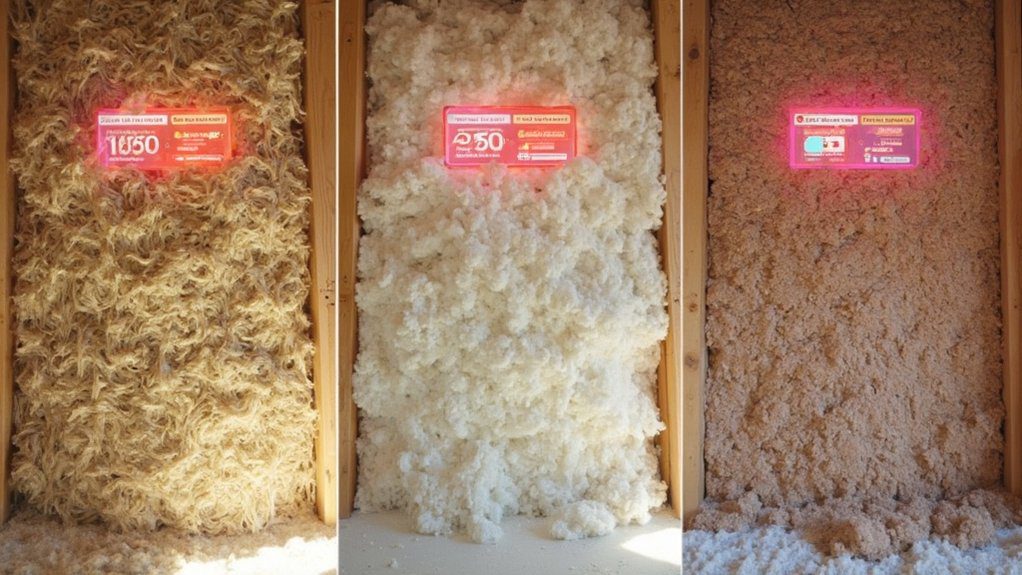
Understanding your potential energy savings requires analyzing multiple variables through a thorough ROI calculator.
You’ll need to input your home’s size, current energy bills, and local climate data to generate accurate projections.
For standard UK homes, mineral wool insulation typically delivers ROI within 2-4 years, while spray foam may take 4-6 years to recoup costs.
Natural materials like hemp wool show returns in 3-5 years while offering superior insulation performance.
To calculate your specific timeline, multiply your annual heating costs by the expected energy efficiency improvement percentage (typically 25-35% for cavity wall insulation).
Consider using the Energy Saving Trust’s calculator, which factors in current energy prices and regional temperature variations.
You’ll join thousands of UK homeowners who’ve used these tools to validate their insulation investments.
Installation Process: DIY Vs Professional Requirements
Once you’ve calculated your potential ROI, deciding between DIY installation and professional services becomes your next key consideration.
Most cavity wall insulation requires professional installation due to specialized equipment and building regulations, while simpler loft insulation projects often suit DIY approaches.
For DIY insulation projects, you’ll need proper safety gear, including respirators, protective clothing, and adequate lighting. You must also guarantee compliance with UK building regulations and secure necessary permits.
However, professional installation offers certified expertise, warranties, and guaranteed compliance with current standards.
Consider these factors: project complexity, material type, access requirements, and your skill level.
While DIY can save money initially, professional installation typically provides better long-term performance and safety assurance.
Most UK homeowners opt for professional services for cavity walls and choose DIY for basic loft insulation.
Finding and Vetting Certified Local Insulation Contractors

When seeking certified insulation contractors in the UK, you’ll need to verify credentials through established regulatory bodies like the National Insulation Association (NIA) or the Cavity Insulation Guarantee Agency (CIGA).
Check their membership status and certification dates to ascertain they’re current with industry standards.
Request detailed project timelines and written quotes from at least three contractors. Compare their proposed methodologies, materials, and warranty terms.
Look for those who offer thorough site surveys and thermal imaging assessments before installation.
You can cross-reference contractor credentials through TrustMark, the government-endorsed quality scheme.
Ask for references from recent local installations and verify their public liability insurance.
Join community forums and local homeowner groups to gather firsthand experiences with specific contractors in your area. Many members share valuable insights about reliability and workmanship quality.
Frequently Asked Questions
Can Pets or Rodents Damage Different Types of Insulation Materials?
Yes, your insulation’s at risk from pet behavior and rodent damage. You’ll need sealed barriers and pest-resistant materials like mineral wool or foam boards for rodent prevention. Natural fibers are most vulnerable to nesting.
How Often Should Home Insulation Be Inspected or Replaced?
Periodic proactive planning pays off! You’ll want to inspect your insulation yearly and expect a 20-25 year insulation lifespan. Schedule professional inspections every 2-3 years to catch any moisture or settling issues early.
Does Home Insurance Cover Damage Caused by Failed or Wet Insulation?
Your standard home insurance typically covers damage from sudden insulation failures, but won’t cover gradual deterioration. You’ll need to check your policy specifics, as coverage varies between insurance providers.
Will Installing Insulation Affect My Home’s Resale Value?
Like a cozy winter sweater for your home, proper insulation can boost your property’s resale value by up to 10%. You’ll see benefits through lower energy bills and increased buyer appeal when it’s time to sell.
Can Insulation Materials Trigger Allergies or Respiratory Problems?
You’ll need to be cautious as some insulation allergens can trigger respiratory health issues. Choose hypoallergenic options like mineral wool or cellulose, and guarantee proper installation with protective barriers to minimize exposure.
Conclusion
Insulating your home is like giving it a warm, protective embrace that pays dividends for years to come. You’ll slash your energy bills by 25-35% when you choose the right material and professional installation. Whether you opt for traditional mineral wool’s proven track record or hemp wool’s eco-credentials, your investment will typically break even within 2-4 years. Don’t let another winter drain your wallet – act now to transform your home’s thermal efficiency.

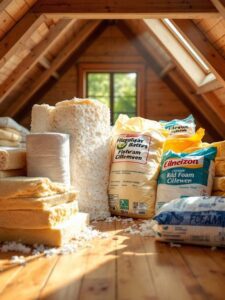
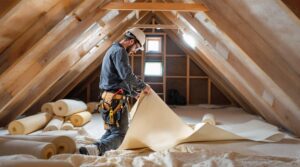

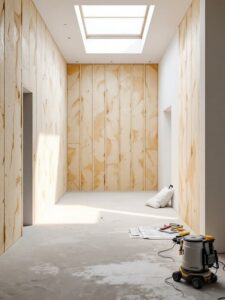



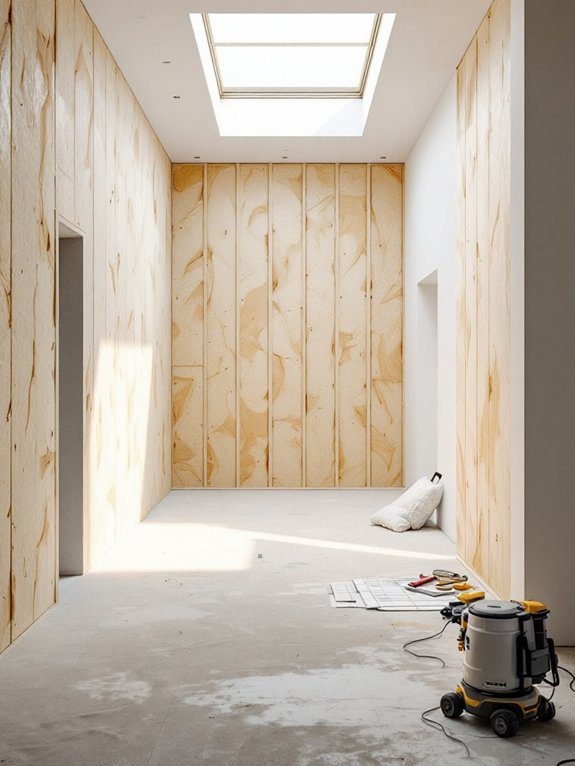
2 Responses
Well I sincerely liked reading it. This subject provided by you is very practical for good planning.
Hello my loved one! I wish to say that this post is amazing, great written and come with approximately all significant infos. I?¦d like to peer extra posts like this .